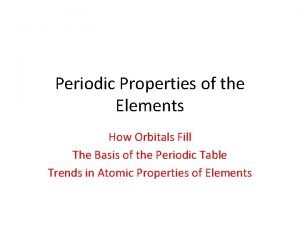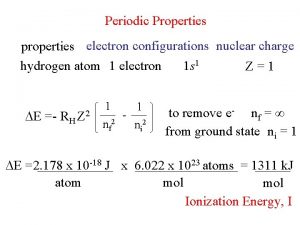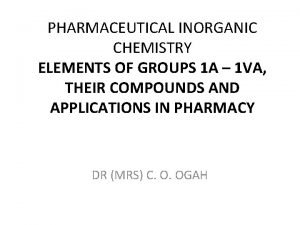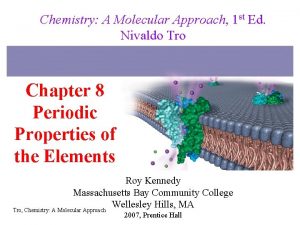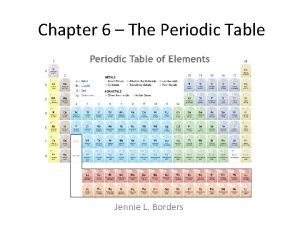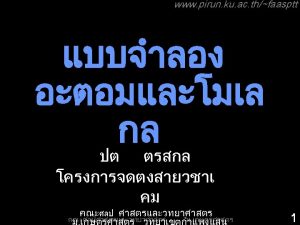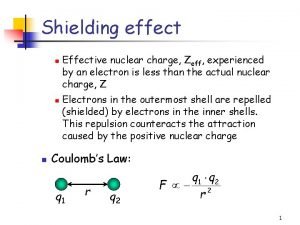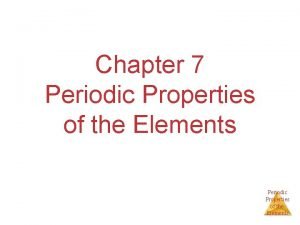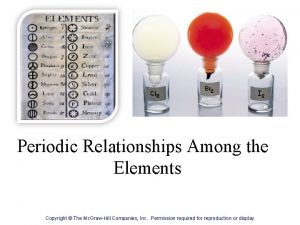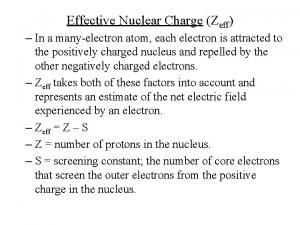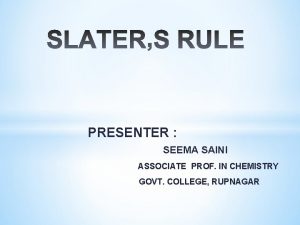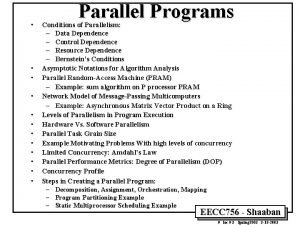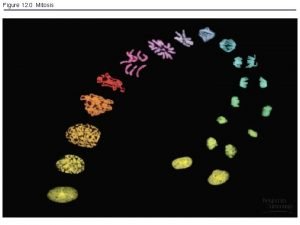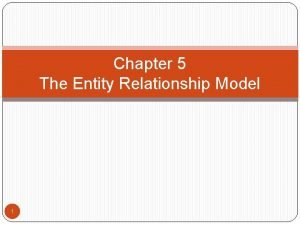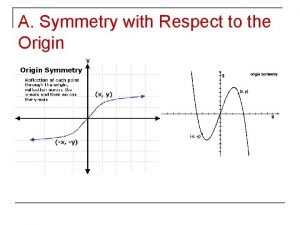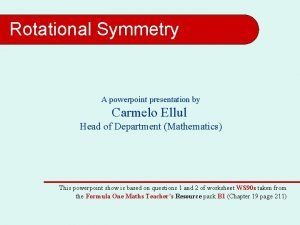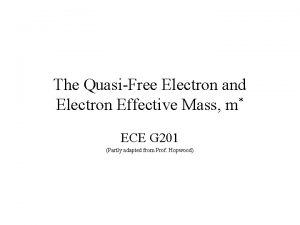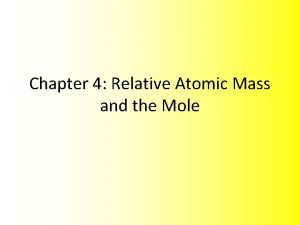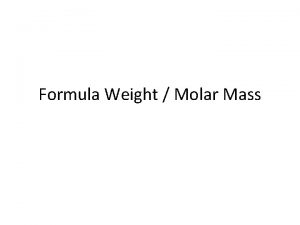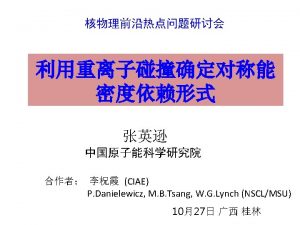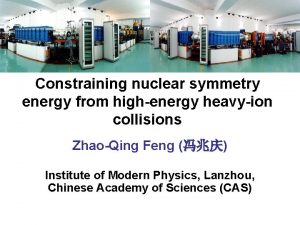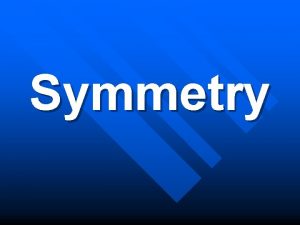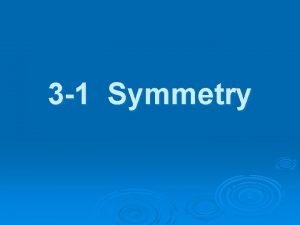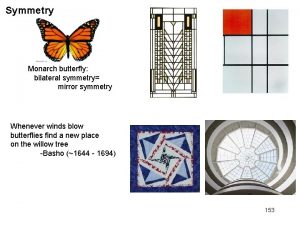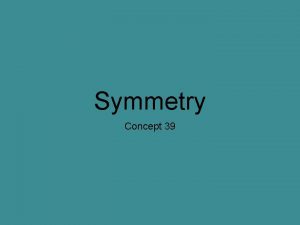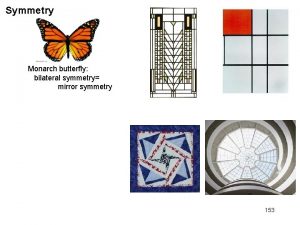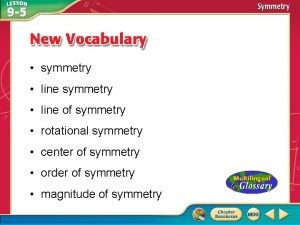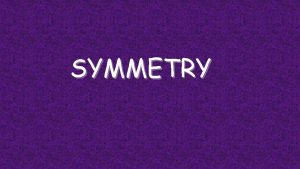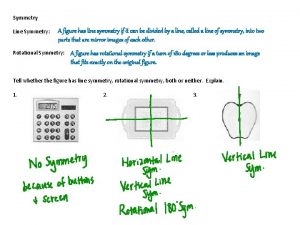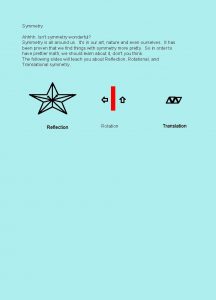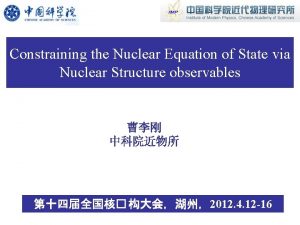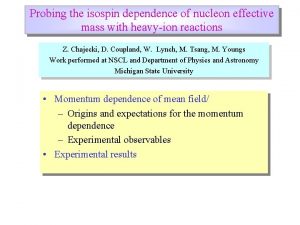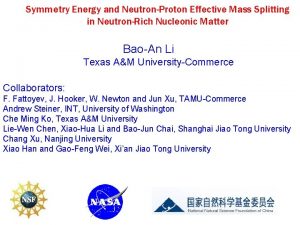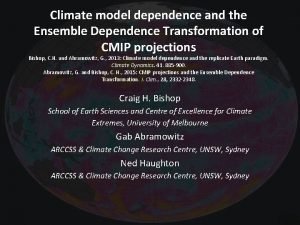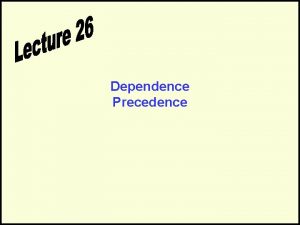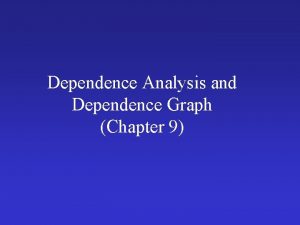Constraining the effective mass dependence of nuclear symmetry





























- Slides: 29

Constraining the effective mass dependence of nuclear symmetry potential with heavy-ion collisions Zbigniew Chajęcki Western Michigan University for the Hi. RA Collaboration

Anatomy of Neutron Stars Neutron stars are a rich playground for the Eo. S and symmetry energy • Photo credit: Casey Reed Inner crust: ρ < ρ0 – Mix of neutron gas and lattice of finite nuclei – S(ρ) determines the thickness of the crust, frequency of star quakes • • Boundary region pasta Outer core: ρ > ρ0 – Neutron-rich nuclear matter – Determines radii, moments of inertia • Inner core ? ? Need to know both high and low density S(ρ) to understand neutron stars. Only laboratory measurements allow us to probe the nuclear matter at various densities. Z. Chajecki - Nu. SYM 2018 1

Symmetry energy How does the potential energy of nuclear matter depend on density and momentum? Z. Chajecki - Nu. SYM 2018 2

Symmetry Energy E/A ( , ) = E/A ( , 0) + d 2 S( ) To probe the EOS of asymmetric nuclear matter (neutron stars) we need to be able to study the nuclear matter at various densities and asymmetries d = ( n- p)/ ( n+ p) = (N-Z)/A The only way we can do it in the laboratory is via heavy ion collisions: - nucleus – nucleus collisions at higher densities require higher beam energies and new detectors - Increase sensitivity to symmetry energy by increasing d (asymmetry between the # of neutrons and protons) Z. Chajecki - Nu. SYM 2018 Stiff Soft 3

Density Dependence of Symmetry Energy Potential =0. 3 E/A ( , ) = E/A ( , 0) + d 2 S( ) stiff d = ( n- p)/ ( n+ p) = (N-Z)/A Uasy (Me. V) soft n and p potentials have opposite signs and slightly different density dependence Observables: • n vs p and t vs 3 He emission and flow • Pion production • Correlations • Isospin transport ratios • …. u= Z. Chajecki - Nu. SYM 2018 4

Reaction probes: Isospin multiplets =0. 3 Yn(ECM) Rn/p(ECM)= Yp(ECM) stiff PLB 664 (2008) 145 Uasy (Me. V) soft Stiff ECM (Me. V) u= repulsive (attractive) potential for neutrons (protons) enhances (suppresses) the neutron (proton) emission 124 Sn: 50 protons, 74 neutrons ~0. 20 Z. Chajecki - Nu. SYM 2018 5

Momentum Dependence of Symmetry Energy Potential Effective mass Z. Chajecki - Nu. SYM 2018 6

Effective-mass splitting Neutron-rich systems show effective-mass splitting Landau-Fermi Liquid Theory RMFT O. Sjoberg, Nuc Phys A 265, 511 -516 (1976) B. Liu, et al Phys Rev C 65, 045201, (2002) Z. Chajecki - Nu. SYM 2018 7

Influence of effective mass B. Liu et al. PRC 65(2002)045201 Transport simulations: 132 Sn+124 Sn J. Rizzo et al, Phys. Rev. C 72, 064609 (2005) m*n<m*p - more neutrons accelerated to high energies acceleration: p. T [Me. V/c] m*p<m*n - more protons accelerated to high energies High energy sensitive to effective mass Z. Chajecki - Nu. SYM 2018 8

Constraining effective mass (I) • Current status mn*<mp* – Divide n/p ratios for two reactions – Minimize systematic uncertainties in detection efficiencies of neutrons and charged particles – Reduces effects from the Coulomb force – Uncertainties large between theory and experiment mn*>mp* mn*<mp* mn*>mp* D. D. S. Coupland et al, PRC 94, 011601 (R) (2016) Z. Chajecki - Nu. SYM 2018 9

Constraining effective mass (II) • Current status – Use coalescence n/p spectra – Obtain pseudo-neutrons from chemical potential scaling. Don’t need to measure neutrons. mn*<mp* mn*>mp* Z. Chajecki - Nu. SYM 2018 10

Motivation for recent experiment • Improvements: Single ratio has better sensitivity BUT need better understanding of experimental system simulations Need to probe at higher energies Requires upgrade to our experimental setup Need to measure particles at energies > 40 Me. V/A to constrain the effective mass of n and p. - requires detector upgrades Z. Chajecki - Nu. SYM 2018 11

Experimental details • Goal is to measure the n/p spectral ratios for a series of heavy-ion collisions • • The Ca+Ni systems are easy/reliable to calculate with transport models The Ca+Sn is more sensitive to the momentum dependence • We ran beams of 40, 48 Ca on 4 targets (systems in the table), measuring the neutrons and light-charged particles emitted • Main improvements over previous work (details to follow) • • Development of a charge-particle veto wall to fully cover the neutron walls Extended length Cs. I crystals high E protons Beam Target δnp 40 Ca 58 Ni/64 Ni 0. 020/0. 077 40 Ca 112 Sn/124 Sn 0. 079/0. 146 48 Ca 58 Ni/64 Ni 0. 094/0. 143 48 Ca 112 Sn/124 Sn 0. 125/0. 186 δnp= (nsys–psys)/(nsys+psys) 8 systems at two different energies (56 and 140 Me. V/A) Z. Chajecki - Nu. SYM 2018 12

Experimental setup VW Hi. RA FA Beam Z. Chajecki - Nu. SYM 2018 13

Experiment: Charged particle detection Upgraded Hi. RA 10 • 12 Silicon-Cs. I(Tl) telescopes • Each telescope has 4, 10 -cm Cs. I(Tl) crystals and a 1. 5 mm thick DSSD with 32 strips on each side • At ~50 degrees off the beam axis, covers ~30 to ~70 degrees Microball • Rings of Cs. I Crystals • Used as a Multiplicity trigger • Used for impact parameter determination Z. Chajecki - Nu. SYM 2018 14

Experimental setup VW Hi. RA FA Beam Z. Chajecki - Nu. SYM 2018 15

Neutron detection Neutron Walls Use NE-213 liquid scintillator for Pulse Shape Discrimination Proton Veto Wall Forward array • • Made at WMU • 25 Plastic Scintillator bars • • Used to remove charged particles from the NW Spectra Z. Chajecki - Nu. SYM 2018 18 Plastic scintillator wedges Used as the start time for the neutron time of flight 16

Large Area Neutron Array LANA is comprised of: • Two Walls of 25 scintillator bars 2 meters long, 7. 7 cm square cross-section NE-213 liquid scintillator In previous work, the veto of charged particles was not perfect • The veto detector was small, close to the target and did not have position information in 2 D; Not all of the charged particles could be rejected Z. Chajecki - Nu. SYM 2018 17

Analysis: Neutron Walls • • PSD gates checked initially with 241 Am. Be source. >24 Hrs of data for both walls In raw fast vs total, separation good but not ideal A flattening algorithm is employed to improve this separation Then using the start time from the Forward Array, TOF spectra can be made Gates are drawn on the 2 D spectrum for neutrons and gammas Particles hitting the veto wall are rejected (to be improved) KE spectra made using precise distance to each bar (laser measured) Preliminary results 48 Ca+124 Sn, E/A = 56 Me. V γ neutrons Credit to Zhu Kuan Z. Chajecki - Nu. SYM 2018 18

Experimental setup: Centrality VW Hi. RA FA Microball Beam Z. Chajecki - Nu. SYM 2018 19

Analysis: Impact parameter selection Impact Parameter 48 Ca Beam We can relate the impact parameter to the normalized probability of detecting a certain charged-particle multiplicity Preliminary Have these Need this Assuming a geometric cross section Credit to Sean Sweany Z. Chajecki - Nu. SYM 2018 20

Analysis is ongoing…. Z. Chajecki - Nu. SYM 2018 21

Summary § Heavy ion collisions provide a unique probe to study the physics of neutron stars in the laboratory - symmetry energy § Recent experiments at NSCL will allow us further constraints of symmetry energy and effective mass at various densities of nuclear matter and also to validate theoretical models § Collaboration between theorists and experimentalists beneficial for both sides Z. Chajecki - Nu. SYM 2018 22

2 3 Thank you Z. Chajecki - Nu. SYM 2018

Modeling heavy ion collisions Our tool: Transport models • BUU – Boltzmann-Uehling-Uhlenbeck • QMD – Quantum Molecular Dynamics • AMD – Antisymmetrized Molecular Dynamics • Simulates the time-dependent evolution of the collision Danielewicz, Acta. Phys. Pol. B 33, 45 (2002) Main ingredients • Nucleons in mean-field • Symmetry energy • Momentum-dependent nuclear interaction effective mass • In-medium cross section • Cluster production Danielewicz, Bertsch, NPA 533 (1991) 712 Z. Chajecki - Nu. SYM 2018 24

Hi. RA Upgrade Old Hi. RA Upgrade Light Guides Cs. I(Tl) Crystal Double Sided Strip E (1. 5 mm) Z. Chajecki - Nu. SYM 2018 25

Hi. RA upgrade • We exchanged the 4 -cm-long Cs. I(Tl) crystals for 10 cm crystals > increased dynamic range Isotope 4 cm Cs. I (Me. V) 10 cm Cs. I (Me. V) p 116 200 d 157 265 t 186 314 • This increase comes at the cost of loss in efficiency due to outscattering and nuclear reactions • This efficiency is also a function of energy, so the most dramatic losses will occur for the highest energy particles P. Morfouace et al, NIM A 848, 45 (2017) Z. Chajecki - Nu. SYM 2018 26

Charged particle identification Particle identification = High Resolution Array 7 Li 7 Be 6 Li 4 He 3 He 4 x Si-E 500 mm Si-DE 65 mm Cs t I(T l) d p Z. Chajecki - Nu. SYM 2018 27

Z. Chajecki - Nu. SYM 2018 28
 Love constraining to obedience
Love constraining to obedience Lesson 15 nuclear quest nuclear reactions
Lesson 15 nuclear quest nuclear reactions Fisión nuclear vs fision nuclear
Fisión nuclear vs fision nuclear Effective nuclear charge trend
Effective nuclear charge trend Hydrogen electron configuration
Hydrogen electron configuration Effective nuclear charge explained
Effective nuclear charge explained Effective nuclear charge trend
Effective nuclear charge trend Zeff effective nuclear charge
Zeff effective nuclear charge What is nuclear charge in chemistry
What is nuclear charge in chemistry Effective nuclear charge
Effective nuclear charge Iso electronic species
Iso electronic species Zeff effective nuclear charge
Zeff effective nuclear charge Effective nuclear charge trend
Effective nuclear charge trend Effective nuclear charge zeff
Effective nuclear charge zeff Z effective of chlorine
Z effective of chlorine Galbraith dependence effect
Galbraith dependence effect A logical grouping of characters is a
A logical grouping of characters is a What is a linear transformation linear algebra
What is a linear transformation linear algebra Psychological dependence
Psychological dependence Program data dependence is caused by
Program data dependence is caused by Ffa creed facts
Ffa creed facts Addison wesley longman
Addison wesley longman Structure dependency principle
Structure dependency principle Lead magnesium niobate/lead titanate
Lead magnesium niobate/lead titanate Existence dependent
Existence dependent Is a graph symmetric with respect to the origin
Is a graph symmetric with respect to the origin Ppt on symmetry
Ppt on symmetry Effective mass formula
Effective mass formula Formula mass vs molecular mass
Formula mass vs molecular mass Formula mass vs molar mass
Formula mass vs molar mass



